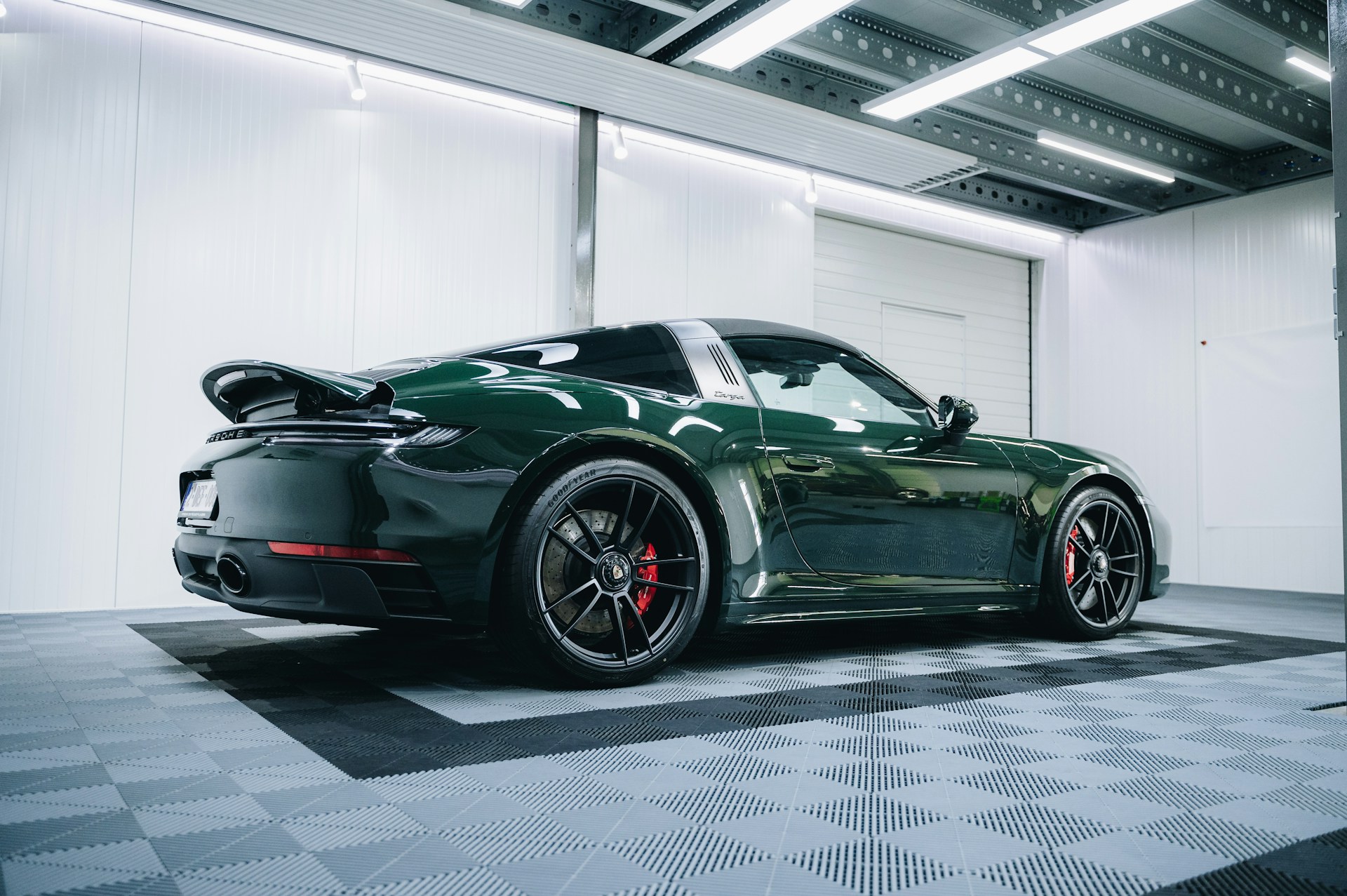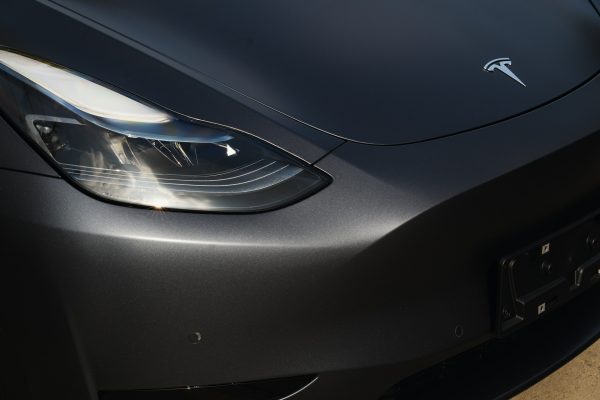
Is Paint Protection Film (PPF) Worth the Investment? Here’s What You Need to Know
What if there were a way to keep your car looking showroom new, no matter where you drive? Paint Protection Film (PPF) has gained popularity among vehicle owners looking to preserve their car’s aesthetic and value. This clear, durable layer provides essential protection against scratches, chips, and environmental damage, making it a worthwhile investment for many. Learn about what PPF is, it’s benefits and drawbacks, installation costs, maintenance tips, and alternatives, so you can make a decision about whether or not it’s right for your vehicle.
What is Paint Protection Film?
Paint protection film (PPF) is a clear, durable layer applied to your vehicle’s paintwork to shield it from daily wear and tear. This transparent barrier defends against scratches, chips, and stains caused by road debris, harsh UV rays, and other environmental factors. By reducing visible damage, PPF helps maintain your car’s appearance and resale value over time.
Is Paint Protection Film a Good Idea?
Deciding if paint protection film (PPF) is right for you depends on factors like your vehicle type, driving habits, and personal priorities. Here’s a closer look at the pros and cons to help you decide:
Pros of PPF
- Protection from Damage: PPF effectively shields against scratches, chips, and wear, especially in high impact areas. This is particularly beneficial if you drive in areas with a lot of road debris.
- Self-Healing Properties: Many modern PPFs offer self healing capabilities, meaning minor scratches disappear with heat exposure, helping your car maintain a flawless finish.
- UV Resistance: PPF blocks harmful UV rays, reducing the risk of paint fading or discoloration over time.
- Maintains Resale Value: A vehicle with well maintained paint can command a higher resale value. PPF helps keep your car looking new, which can be appealing to potential buyers.
- Ease of Maintenance: Cars with PPF are often easier to clean, as the film repels dirt and grime, simplifying upkeep.
Cons of PPF
- Cost: PPF can be a significant upfront investment, especially for high quality film and professional installation.
- Quality of Installation Matters: The effectiveness of PPF relies on skilled installation; poor application can lead to bubbles, peeling, or misalignment.
- Not Indestructible: PPF shields against most hazards, but it may not withstand severe impacts.
- Potential Yellowing: Some lower quality PPFs may yellow over time, which can affect your vehicle’s appearance.

How Much Does Paint Protection Film Cost?
The cost of paint protection film (PPF) varies significantly based on factors like vehicle size, film quality, installation complexity, and the areas you want to cover. Here’s a general cost breakdown:
Average Costs of Paint Protection Film (PPF)
The cost of applying paint protection film (PPF) can vary widely depending on the type of coverage you choose and the quality of the materials. If you want to cover your entire vehicle, prices usually range from $2,000 to $7,000 or more. The exact price depends on the make and model of your car, as well as the brand of PPF you select.
For partial coverage, which includes only high-impact areas like the hood, fenders, and front bumper, the cost is generally between $500 and $2,500. This option can be a good choice if you want to protect the most vulnerable parts of your car without spending as much money.
The quality of the PPF also affects the price. Higher-quality films, especially those with self-healing properties that can repair minor scratches on their own, tend to be more expensive. Premium brands charge more for both the materials and the installation process. These films often offer better protection and longer-lasting results.
When it comes to installation, it’s recommended to have a professional apply the film. Labor costs can vary depending on the location of the shop and the experience of the installer. Professional installation can add several hundred dollars to the total cost of the project.
Some PPF options come with warranties, which can add value in the long term. Premium films often include longer warranties, offering more peace of mind that your investment will last.
Keep in mind that prices can vary by region. To get the best deal, it’s a good idea to get quotes from several local installers. While there are DIY PPF kits available, professional installation is usually the best choice, especially for more complicated areas of the car.
What Is the Installation Process for PPF?
The installation of paint protection film (PPF) typically involves several key steps to ensure optimal adhesion and effectiveness. First, the vehicle’s surface must be thoroughly cleaned and prepped to remove any dirt, wax, or contaminants. Next, the PPF is carefully measured and cut to fit specific areas of the vehicle, ensuring precise application. The installer then applies the film using a specialized solution to eliminate air bubbles and ensure a smooth finish. Depending on the complexity of the installation and the areas being covered, the entire process can take anywhere from a few hours to a full day. Professional installation is highly recommended, as experienced technicians can navigate intricate curves and contours to provide a flawless application.
How long does paint protection film last?
On average, paint protection film (PPF) lasts between five and ten years. However, its longevity can depend on several factors, including the quality of the film and installation, environmental conditions, and maintenance. By understanding these variables, you can maximize the lifespan of your paint protection investment.
How Do I Wash My Car with Paint Protection Film?
Washing your car with paint protection film (PPF) is simple and essential for preserving its look and longevity. Your detailers here at M&J’s Mobile Car Detailing are just right for the job! – Or You can always do it yourself! First, start by washing from the top down, using gentle motions and frequently rinsing your wash mitt to prevent spreading dirt. After washing each section, thoroughly rinse it with water to avoid soap drying on the film. Once clean, dry the car with soft microfiber towels, patting instead of dragging to prevent scratches.
While drying, check the PPF for any signs of wear or damage; addressing issues promptly helps ensure ongoing protection. Avoid automatic car washes with brushes, and steer clear of waxes or sealants not specifically designed for PPF. Following these steps will keep your vehicle looking pristine and extend the life of your paint protection film.

Maintenance Tips for Your PPF
To ensure your paint protection film (PPF) remains effective and visually appealing, regular maintenance is key. Here are some essential tips:
- Regular Inspections: Frequently check the PPF for any signs of wear, scratches, or lifting edges. Early detection of issues allows for timely repairs or reapplication, preserving the film’s integrity.
- Avoid Harsh Chemicals: Stick to pH neutral and PPF specific cleaning products. Harsh chemicals can degrade the film over time, compromising its protective qualities.
- Parking Practices: Whenever possible, park in shaded areas or use a car cover to protect the film from prolonged UV exposure, which can lead to fading and yellowing.
- Immediate Cleanup: Promptly clean any contaminants, such as bird droppings or tree sap, as they can damage the film if left unattended.
- Professional Care: Consider scheduling professional maintenance or detailing services occasionally to ensure your PPF remains in optimal condition.
By following these maintenance tips, you can enhance the lifespan of your PPF and keep your vehicle looking its best for years to come.
What Are the Alternatives to PPF for Car Protection?
Paint protection film (PPF) isn’t the only way to protect your car’s paint. Other popular options include ceramic coatings, wax, and paint sealants, though each has its own strengths and weaknesses.
- Ceramic Coating: Ceramic coatings form a strong, clear layer over the paint that protects it from UV rays, stains, and oxidation (when paint fades or changes color). Ceramic coatings last a long time and are easy to maintain, but they don’t protect well against chips or scratches like PPF does.
- Wax: Traditional wax is a classic choice for adding shine and basic protection to car paint. It’s affordable and easy to apply, but it doesn’t last as long as other options and needs to be reapplied every few months. Wax won’t protect against most scratches or damage, but it’s a good option for adding a quick shine.
- Paint Sealants: Paint sealants are synthetic products that provide a slick surface that repels water and resists fading. They last longer than wax, usually up to a year, but still don’t offer the impact protection that PPF can provide.
Each of these options has some benefits, but none can fully match the strength and durability of PPF. For the best long term protection, PPF is still the top choice.
Does PPF require maintenance?
Maintaining your PPF requires a gentle touch to preserve the film’s protective qualities. Use pH neutral or PPF specific car wash shampoos, which are designed to clean without compromising the film. Regular but careful cleaning helps keep your PPF in top condition and ensures it continues to protect your vehicle’s paint effectively.
Can You Pressure Wash a Car with PPF?
Yes, you can pressure wash a car with paint protection film (PPF), but it’s important to do so carefully. Use a low-pressure hose or a pressure washer set to a low pressure to rinse the vehicle without damaging the film. Employ the two bucket method for washing: dip your wash mitt into a soap and water solution and clean the vehicle in sections. This approach helps maintain the integrity of the PPF while ensuring a thorough wash.
How Do I Keep My PPF Shiny?
To keep your paint protection film (PPF) shiny, regular cleaning and maintenance are essential. You can give your detailer a call, or do it yourself! Use a mild automotive detergent along with a clean, soft microfiber cloth to wash the film gently. Applying a compatible wax or sealant can enhance its shine while providing extra protection.
Does PPF Affect Resale Value?
Installing PPF not only boosts the visual appeal of your vehicle but also helps maintain its value over time. Studies have indicated that cars with PPF often command a higher resale value compared to those without it. On average, vehicles with PPF can see an increase of 5–10% in resale value.
Can You Put Ceramic Wax Over PPF?
Yes, applying a ceramic coating over PPF can enhance durability, extending the lifespan of both the PPF and the coating itself. This combination offers a double layer of protection, helping to preserve your vehicle’s finish for an extended period.
What Not To Use on PPF?
Avoid Harsh Chemicals and Acidic Solutions: When cleaning your vehicle with paint protection film (PPF), it’s crucial to steer clear of harsh chemicals and acidic solutions. These substances can break down the protective film, leading to discoloration and compromising its ability to safeguard your vehicle’s paint. Always opt for pH neutral or PPF specific cleaning products to ensure the longevity and effectiveness of the film.
Frequently Asked Questions (FAQ)
How long does PPF last on a car?
On average, paint protection film (PPF) lasts between five to ten years. Its longevity can depend on factors such as film quality, installation, environmental conditions, and maintenance.
Can I install PPF myself?
While DIY kits for PPF are available, professional installation is highly recommended to ensure proper adhesion and a flawless finish. Experienced technicians can navigate intricate curves and contours that may be challenging for beginners.
Is PPF removable?
Yes, PPF can be removed. However, it’s advisable to have it done by professionals to avoid potential damage to the underlying paint.
Can I wash my car with PPF?
Yes, you can wash your car with PPF. Use gentle washing techniques, avoid harsh chemicals, and follow recommended washing methods to maintain the film’s integrity.
Does PPF yellow over time?
Lower quality PPFs may yellow over time, especially if they are not UV resistant. Investing in high quality PPF can help mitigate this issue and ensure a longer lasting, clearer finish.
Can I apply wax or sealant on top of PPF?
Yes, applying a compatible wax or sealant on top of PPF can enhance its shine and provide additional protection. Ensure that the products you choose are specifically designed for use with PPF.
Paint protection film (PPF) is an excellent choice for those looking to maintain the pristine appearance and value of their vehicle. Not only does PPF shield against scratches, chips, and environmental damage from daily driving, but it also helps protect the paint’s finish, enhancing your vehicle’s resale value over time. With its long lasting durability, PPF provides reliable peace of mind, allowing you to enjoy your car’s glossy, like new look for years to come.
If you’re ready to give your vehicle the best defense against wear and tear, contact a professional PPF installer today to explore your options!

